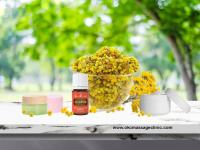May 21, 2022
Wound healing is a natural body reaction formed as a tissue response to injury. Restoration of the structural and functional integrity of injured tissues is a very complex and dynamic process involving various overlapping phases such as hemostasis, inflammation, proliferation, and maturation. Each phase of healing involves a cascade of cellular and biochemical processes mediated by various growth factors, cytokines and enzymes, which play an inter-dependent and pivotal role in wound healing. Many important factors such as diabetes, hypertension, aging, malnutrition, radiation, and medication use are associated with the compromised capacity of skin to promote self-regeneration and consequent delayed wound healing. An impairment of the immune system in diabetic patients leads to an increased vulnerability to the contamination of the wound and postpones tissue recovery. On the other hand, poor circulation, as a consequence of hyperglycemia hinder the delivery of defense factors and nutrients to the wound area resulting in a delay or, absence of wound healing.
Advantages of topical formulations in comparison to systemically applied drugs involve deeper penetration into skin, increased bioavailability, and direct action on the site of application. Although various therapeutic regimens involving antibiotics, antiseptics, and anti-inflammatory agents are available for the management of wounds, last decades shed the light on medicinal plants and natural products as a major source of wound healing compounds. A significant increase in the usage of medicinal herbs is the result of greater safety compared to chemical drugs, with more affordable prices.
Helichrysum italicum, usually known as Immortelle, is a plant growing throughout the Mediterranean but especially in the Adriatic region, where locals use it for a variety of disease conditions due to its anti-inflammatory, antioxidant, and antibacterial properties. The frequent use of Helichrysum essential oil in the formulation of skincare products is the result of its ability to delay the cutaneous aging process. Helichrysum essential oil is a powerful oil, and in my experience even very small amounts can produce remarkable results. This held true in a recent preclinical model that evaluated the benefits of an ointment containing 0.5% helichrysum essential oil for diabetic wounds. The ointment was applied once daily for 21 days and compared against no treatment and silver sulfadiazine (standard wound treatment). After 21 days, the helichrysum ointment promoted the greatest wound healing, reduced scarring, and increased skin texture. This suggests that helichrysum may be a promising solution to help wounds healing in people with diabetes.
https://pubmed.ncbi.nlm.nih.gov/35429742/

